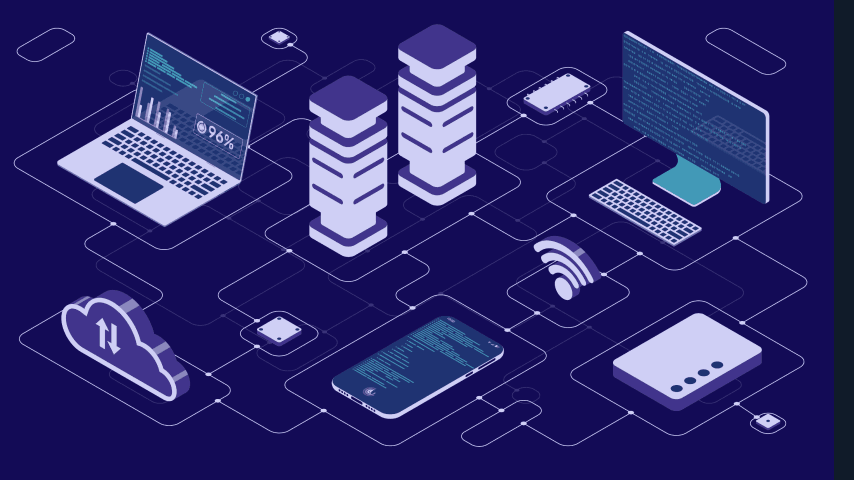IoT is fundamental to making strides in operational capabilities and real-time information collecting in today’s trade environment. Empowering IoT device organization is fundamental for keeping up security, ensuring information insights, and controlling the expanding complexity of these systems as businesses proceed to depend on connected IoT devices.
This article explores when and why companies should consider implementing an IoT device management platform to address these challenges, improve operational efficiency, and provide scalable, secure, and effective device management thingsboard.io/device-management.
When to Implement an IoT Device Management Platform
If any of the following issues apply to you, consider implementing an IoT device management platform:
- Scalability Prerequisites: Manual management becomes impractical as the number of IoT devices grows.
- Security Prerequisites: Strong security features, including regular technical assessments and monitoring, are necessary.
- Data Management: Handling vast amounts of data from IoT devices is critical for business operations.
- Remote Management: Centralized management is essential for devices spread across multiple locations.
- Cost Efficiency: Optimizing resources and utilizing AI can help reduce operational costs.
- Rule Engine: Setting rules for processing data from IoT devices and managing new device connections, users, and access.
Implementing a robust IoT device management platform can simplify these stages, enhance security, and ensure that companies can scale and strengthen their business operations.
Real Cases for IoT Device Administration
IoT device administration can change various industries by streamlining processes and improving operational capabilities. Here are some real-life applications illustrating how these solutions can be effectively implemented:
- Fleet Management: Organize fleets into custom groups with hierarchical structures, allowing for precise control over drivers, vehicles, and configurations. This approach improves management efficiency at the fleet group or individual vehicle level.
- Smart Farming: Implement IoT sensors to monitor key factors such as soil conditions and weather patterns. Data from these sensors can be visualized through customizable dashboards, facilitating better decision-making and optimizing the management of agricultural resources.
- Smart Metering: Collect and aggregate data from smart meters reliably. This information can be analyzed to identify issues like leaks or inconsistencies and presented to clients through a clear, intuitive interface.
- Smart Energy: Manage energy consumption data from IoT monitors with high reliability. Visualize real-time and historical data on customizable dashboards and integrate it with third-party analytics tools for comprehensive energy management.
- Smart Office: Monitor and control indoor climate conditions to enhance workplace comfort and productivity. Utilize advanced data visualization and remote control features to optimize resource utilization and maintain a conducive work environment.
These scenarios demonstrate how effective IoT device management can streamline operations, improve resource management, and support better decision-making across different sectors.
Lifecycle of IoT Device Management
To effectively manage IoT devices, it’s essential to understand the IoT device management lifecycle, which includes several critical steps:
- Provisioning: Assign unique identifiers, register IoT devices, and configure network connectivity parameters as part of the initial setup.
- Authentication: Ensure security from the start by verifying and identity of devices before granting them access to network resources.
- Configuration Administration: Modify device characteristics and settings remotely to keep your deployment running smoothly.
- Maintenance: Use hardware diagnostics, firmware updates, and further troubleshooting to keep devices functioning properly.
- Monitoring: Get quick knowledge of the usefulness, security, and common state of your devices to expeditiously resolve any problems.
- Diagnostics: Access IoT device logs remotely to make error analysis and troubleshooting.
- Firmware and Software Updates: Renew firmware and program frequently to address issues, fix security gaps, and include the newest features.
- End-of-Life (EOL) Administration: To defend your organization, when an IoT device comes to the end of its valuable life, delete vital information securely and halt permitting access to the network.
For comprehensive management that supports the full IoT device management lifecycle, consider using platforms like ThingsBoard thingsboard.io, which offers powerful tools for provisioning, monitoring, and maintaining IoT devices.
Conclusion
In conclusion, protecting the security, scalability, and efficiency of connected IoT sensors depends on reliable IoT device management. Effective strategies guarantee stable device operation, secure data handling, and correct resource usage, enabling companies to maintain a dominant position in the sector.
Every business planning to leverage IoT must consider the whole lifecycle of IoT device management. Controlling all these aspects is convenient and efficient with an IoT platform, it’s essential to approach the choice of platform hastily taking into account the specific needs of the business.
Follow Techdee for more!
